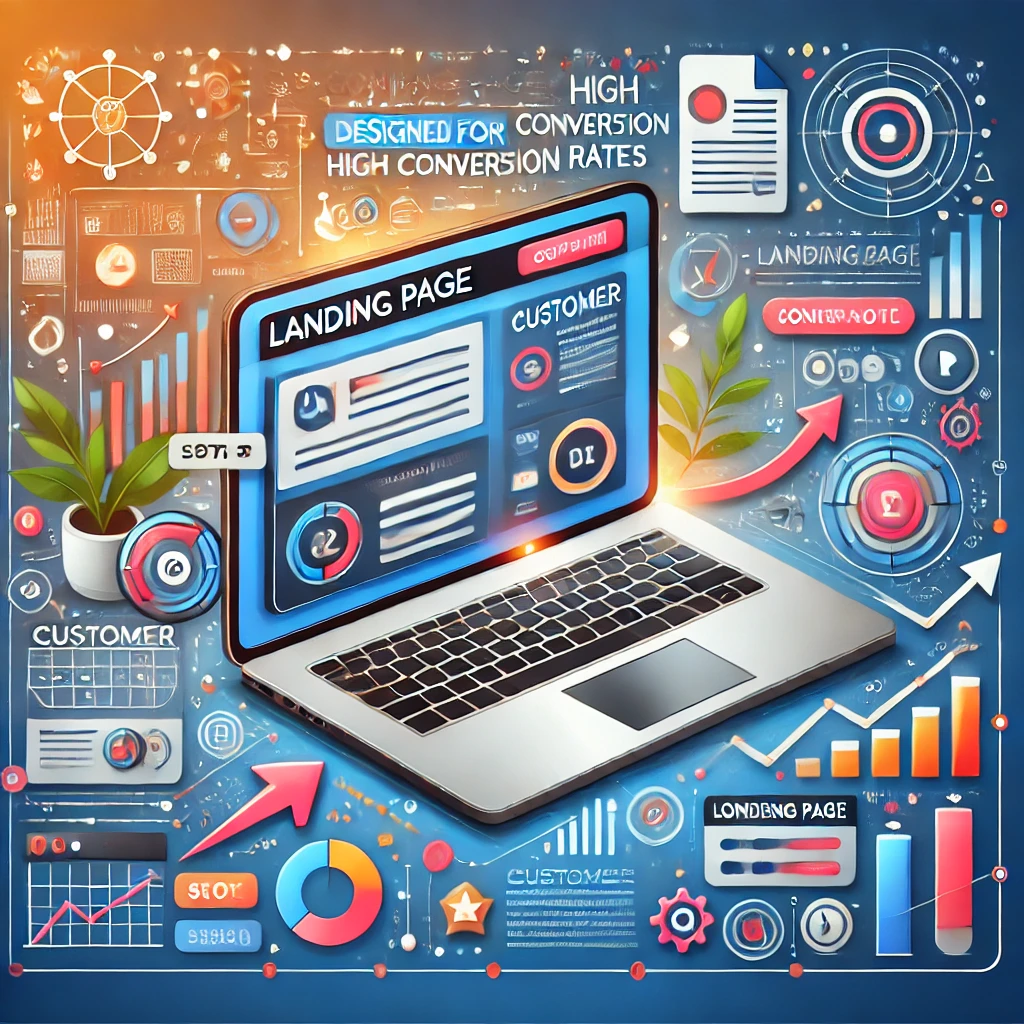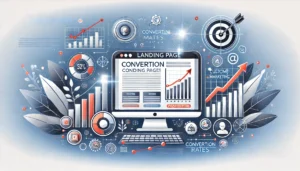
Introduction
In the fast-paced world of digital marketing, driving traffic to your website is only half the battle. The real challenge lies in converting those visitors into customers. This is where landing pages play a crucial role. A well-designed landing page is more than just a destination for your traffic; it’s a powerful tool that can significantly increase your conversion rates, turning casual browsers into loyal customers. In this article, we will explore the importance of landing pages and how they can be optimized to maximize conversions.

What is a Landing Page?
A landing page is a standalone web page created specifically for a marketing or advertising campaign. It’s the page where a visitor “lands” after clicking on a link in an email, ad, or search engine result. Unlike general website pages, landing pages are designed with a single focus or goal, known as a call-to-action (CTA), such as signing up for a newsletter, downloading an eBook, or making a purchase.
The Importance of Landing Pages for Conversions
- Focused Messaging Unlike your homepage or other general web pages, a landing page is created with a specific purpose in mind. It targets a particular audience segment, which allows for tailored messaging. This focused approach ensures that the visitor is not distracted by other content, leading to a higher chance of conversion. By honing in on a specific offer or action, you can guide the visitor toward the desired outcome.
- Improved User Experience A well-designed landing page provides a seamless user experience. It should load quickly, be visually appealing, and be easy to navigate. Since the page is dedicated to a single offer or action, it eliminates unnecessary distractions, making it easier for the user to complete the desired action. This streamlined experience contributes to higher conversion rates.
- Clear Call-to-Action (CTA) The CTA is the heart of any landing page. It’s the action you want your visitors to take, whether it’s filling out a form, making a purchase, or downloading content. A landing page allows you to position your CTA prominently, with persuasive copy and design elements that encourage the user to act. A clear, compelling CTA can significantly boost conversion rates.
- Data Collection and Insights Landing pages are also valuable for collecting data. By analyzing how visitors interact with your landing page, you can gain insights into their behavior and preferences. This data can inform future marketing strategies, allowing you to refine your approach and increase conversions over time. Metrics such as bounce rate, time on page, and conversion rate provide valuable feedback on the effectiveness of your landing page.
- Enhanced Ad Performance When paired with digital advertising, landing pages can dramatically improve your ad performance. Directing traffic to a landing page rather than a generic website page ensures visitors are met with content relevant to the ad they clicked on. This relevancy increases the likelihood of conversion and reduces your ads’ cost per acquisition (CPA).

Key Elements of an Effective Landing Pages
- Compelling Headline Your headline is the first thing visitors will see, so it needs to grab their attention and convey the value of your offer. It should be concise, persuasive, and aligned with the content that led the visitor to the page.
- Engaging Visuals Visual elements such as images, videos, and infographics can enhance the appeal of your landing page. They should be relevant to your offer and help communicate your message quickly and effectively.
- Concise Copy The text on your landing page should be clear, concise, and focused on the benefits of your offer. Avoid overwhelming visitors with too much information. Instead, use bullet points, short paragraphs, and bold text to highlight key points.
- Strong CTA Your CTA should be prominently displayed, with action-oriented language that motivates the visitor to act. It should be visually distinct, using contrasting colors and strategic placement to stand out on the page.
- Trust Signals Trust signals such as customer testimonials, reviews, certifications, and security badges can reassure visitors that they are making a safe and informed decision. These elements can reduce friction and build credibility, leading to higher conversion rates.
- Mobile Optimization With an increasing number of users accessing the internet via mobile devices, ensuring that your landing page is mobile-friendly is essential. A responsive design that adapts to different screen sizes will provide a better user experience and increase the likelihood of conversion.
Conclusion
Landing pages are a vital component of any successful digital marketing strategy. By focusing on a specific goal, providing a seamless user experience, and delivering a clear and compelling message, landing pages can significantly increase your conversion rates. Investing time and effort into optimizing your landing pages will pay off in the form of higher customer engagement, increased leads, and ultimately, greater business success.
Whether you’re looking to capture leads, promote a product, or drive sales, a well-crafted landing page is your gateway to better conversions.



